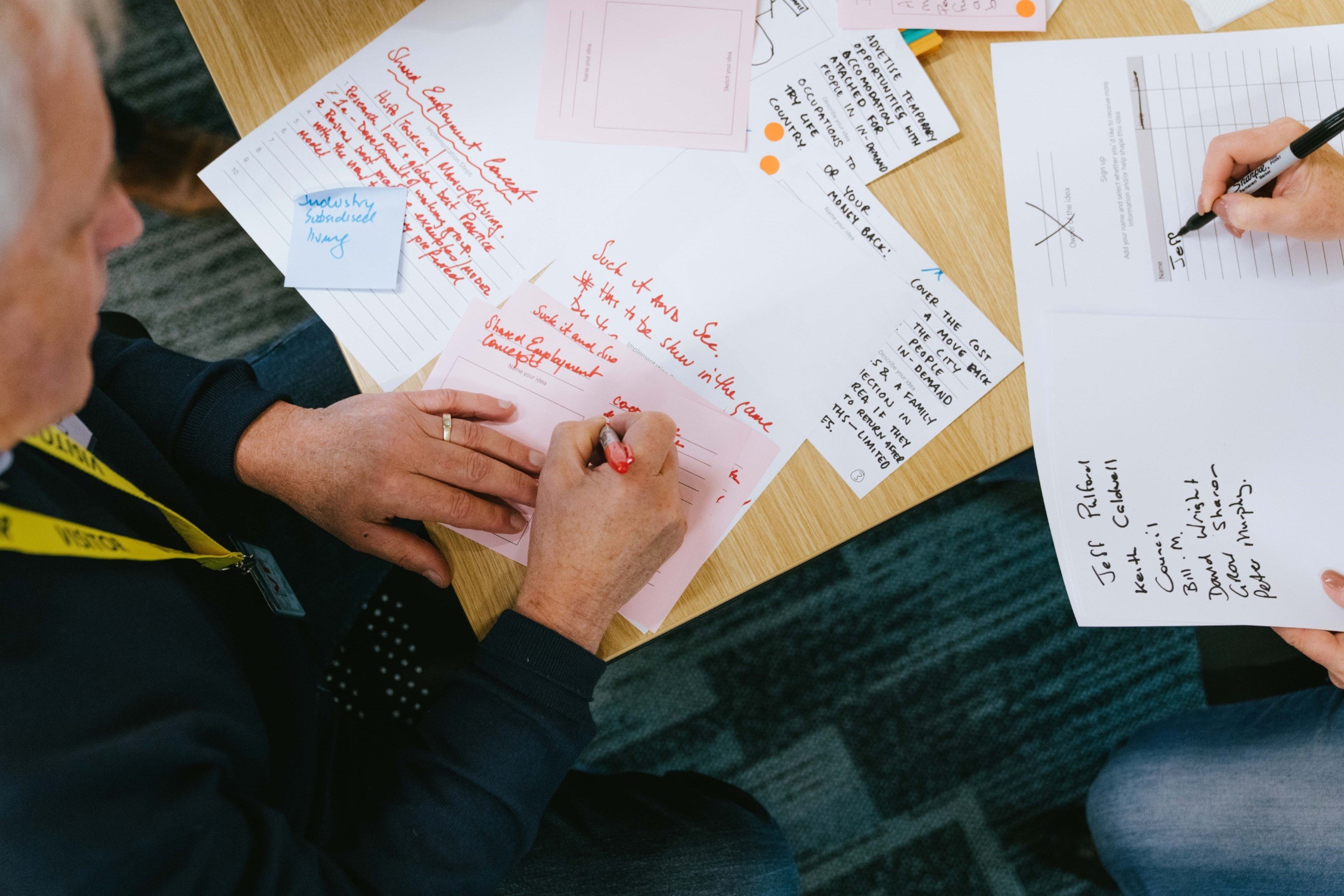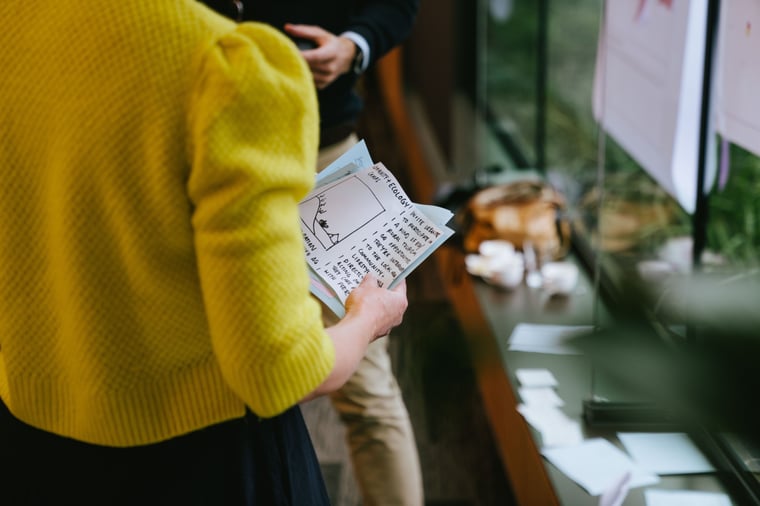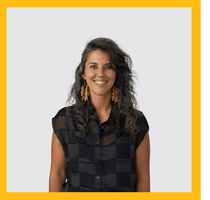How to prepare for co-design
-1.png)
Co-design can be tricky.
Partly, it’s tricky because it’s a bit of a buzzword. And the trouble with buzzwords is that they can lose meaning quickly by being applied poorly.
The rest of it is tricky because, well, it can get tricky. At its heart, it requires people to re-think and re-shape fundamental ways of working, decision making and collaborating with others. It requires all participants to question their own values and assumptions and that can be difficult and confronting.
But, it’s worth it.
The critique of the medical model1 in recent decades—as a narrow framework within which to consider an individual’s health—has opened conversations about what ‘care’ really means, what health and wellbeing outcomes are important to whom, and in what circumstance. It has been an important vehicle by which alternative, less disease-oriented, more social narratives of health have entered the clinical arena2.
Co-design can be a partner in the evolution of this perspective in healthcare. The move from ‘what’s the matter’ to ‘what matters to me’, is a fundamental reorientation needed as healthcare moves towards a more relational approach that is strengths-based and considers the role of people, place and purpose in achieving outcomes that are meaningful to all.
Why is co-design a good partner in this process? Because its goal is to actively engage different kinds of people and knowledge to design and decide on solutions together in response to shared challenges. Both the ‘co’ and the ‘design’ are important and complementary:
The ‘co’ means we bring people together to talk and collaborate, understand and generate knowledge.
The ‘design’ means we, side-by-side, intentionally decide on solutions or improvements together. These are solutions that both professionals and service users believe will improve the outcomes that matter to each.
Understanding and applying this requires the intentional creation of mindsets, conditions and activities that are needed to make co-design go well.
And it’s important to try and make it go well (whilst being kind to yourself and others), because if we do it badly, we can “exacerbate social exclusion and destroy trust systems.”3
If you’re thinking about how to bring co-design into your organisation or project, great! There are good reasons for it. Below are a few tips to get you started on how you might plan for co-design.
First, ask yourself: is co-design the “right” approach for the project or circumstance? Consider outcomes, constraints, time and risk:
- What’s the outcome you’re seeking to achieve and who is the intended beneficiary? Can you involve them in understanding and solving the problem? (Before this, do they even agree with you that this is a problem to solve?)
- What constraints are you working with? Co-design takes time, will, commitment—and likely extra resources.
What’s the risk if we don’t co-design? Are we confident in the solution we will develop without the input of our community, customers or users?
If you’ve asked these questions and it’s clear that co-design is not an approach you can or should take in this circumstance—that’s okay. Be explicit and transparent about that. Though you should continue to focus on, and foster the conditions and mindsets for when you will co-design so that your organisation is prepared to do it well.
If you’ve asked those questions and you are ready to begin this journey, what’s next?
1. Establish your team
You will need a team that is empowered to both ‘do’ and ‘decide’. This team will plan and drive the work and can include different lenses (eg lived experience and practitioners) relevant to the co-design process.
Be really clear about:
- who is doing what on the project team
- who is in the wider co-design team, and
- who is making decisions about what.


2. Foster great relationships in your team
Collaboration is a skill that needs to be learned, and trust is a quality that needs to be earned. We need both for co-design to go well.
Collaboration requires skills in communicating with others, resolving conflict, and task management. It’s not a given and needs to be established intentionally. There are many ways to do this:
- Consider how to create time and space to communicate well with each other and to notice risks to trust or collaboration (and call them out).
- Create welcoming rituals that connect people with each other and help them understand one another, and create shared agreements on how you will work together. Building trust is complex and nuanced, but if you can embody honesty and authenticity, empathy for others, consistency and reliability, and sound judgment, you’ll be well on your way.
- Create safe spaces to have open conversations about personal goals and expectations for the project, follow through on commitments that are made, and immerse in deeply understanding one another.
3. Build a shared understanding of the scope of the co-design project
While it’s tempting to dive straight into the work to be done, spend time zooming out to align on the vision and ‘why’ at the beginning of a co-design project. Don’t just align on the big stuff; also make time to sweat the detail. Is there a shared language and common understanding of terms? Is there agreement on what’s in and out of scope? Is everyone on the same page about where you want to get to and how you’ll get there?
Importantly, map out your co-design opportunities for each stage of the project – when will you be exploring, making, understanding, deciding together with people, and how will you be doing it? Doing this will also help you determine what experience or perspectives you might need in the room to co-design all or some of the work.
4. Plan for a safe and effective co-design environment
If you have spent time on the first three items above, amazing! You have begun building an effective co-design environment. You will also need to build and embed practices for safety. This is about supporting your co-designers so that they have a safe and effective co-design experience.
Safety is a broad term that reflects the need to consider how trauma can show up in co-design and how our own biases and assumptions can cause rifts or re-traumatisation, and ultimately undermine, or even ruin the co-design experience. If you risk safety, you erode trust.
Thinking about safety before, during and after co-design can include many practical strategies for a model of care, such as:
Before
- Consider who you are involving and what their needs may be and what you’re asking of them. Be thoughtful about who to involve when, how and in what ways.
- Create briefs that describe in detail what the project is about and what is expected from co-designers, so that they can make an informed choice about participating.
During
- Ensure accessibility needs have been understood and considered. Provide options for how people might participate.
- Onboard co-design participants early so that they have time to ask questions and know what’s expected of them.
- Create time for co-designers to get to know each other and establish shared agreements on how they will work together.
- Be creative about ways to engage with people, generate knowledge or make decisions together.
After
- Ensure supports such as peer support are available.
- Have de-briefs with your core project team and problem solve early.
5. Be forgiving, be courageous, and have some fun
Fundamentally, co-design brings together people in ways that they may not have experienced before. It holds promise to foster empathy, create positive relationships, and generate change. It’s a learning journey that everyone trying to co-design is on, so don’t be too hard on yourself or others, and try to have some fun along the way.
These tips are certainly not an exhaustive list on how to approach co-design, but hopefully they provide you with insight into some of the fundamentals. Delivering an outcome through a meaningful co-design process is quite special and part of how we can make lasting change together.
If you’d like to work with me to figure it out together, reach out!
About the Author
 Leva is a Senior Strategic Designer with deep knowledge and extensive experience in public health and nutrition. She has a strong background in research, community healthcare and clinical design, and a passion for service designing better, more valuable outcomes for everyone in the care process. Leva’s rich experience enables her to approach outcomes using many lenses, guided all the while by those with lived experience.
Leva is a Senior Strategic Designer with deep knowledge and extensive experience in public health and nutrition. She has a strong background in research, community healthcare and clinical design, and a passion for service designing better, more valuable outcomes for everyone in the care process. Leva’s rich experience enables her to approach outcomes using many lenses, guided all the while by those with lived experience.
Leva’s previous roles have seen her flex her skills nationally and internationally across government, not-for-profit and health industry sectors. She has worked in Cambodia with international aid agencies, nutrition research in the Netherlands, and held research positions at Deakin University’s maternal and infant health team and the World Health Organisation’s Collaborating Centre for Obesity Prevention. She also holds two Masters degrees—in Public Health, and Nutrition and Dietetics—and a Bachelor in Food Science and Nutrition.
References
[1] If this is defined as a focus on biological and individual elements to illness and wellness, without due consideration to place, purpose and other people or what might be called a ‘social’ model.
[2] Hogan, A. Moving away from the ‘medical model’: the development and revision of the World Health Organisation’s classification of disability, Bull Hist Med, 2019, vol 93(2), pp. 241-269.
[3] Burkett, I. Co-design with service users. Available at: https://www.vichealth.vic.gov.au/-/media/ResearchandEvidence/Codesign-with-service-userscompressed.pdf?la=en&hash=6385DC709F3EF03623550560A117AB8FB533D999



